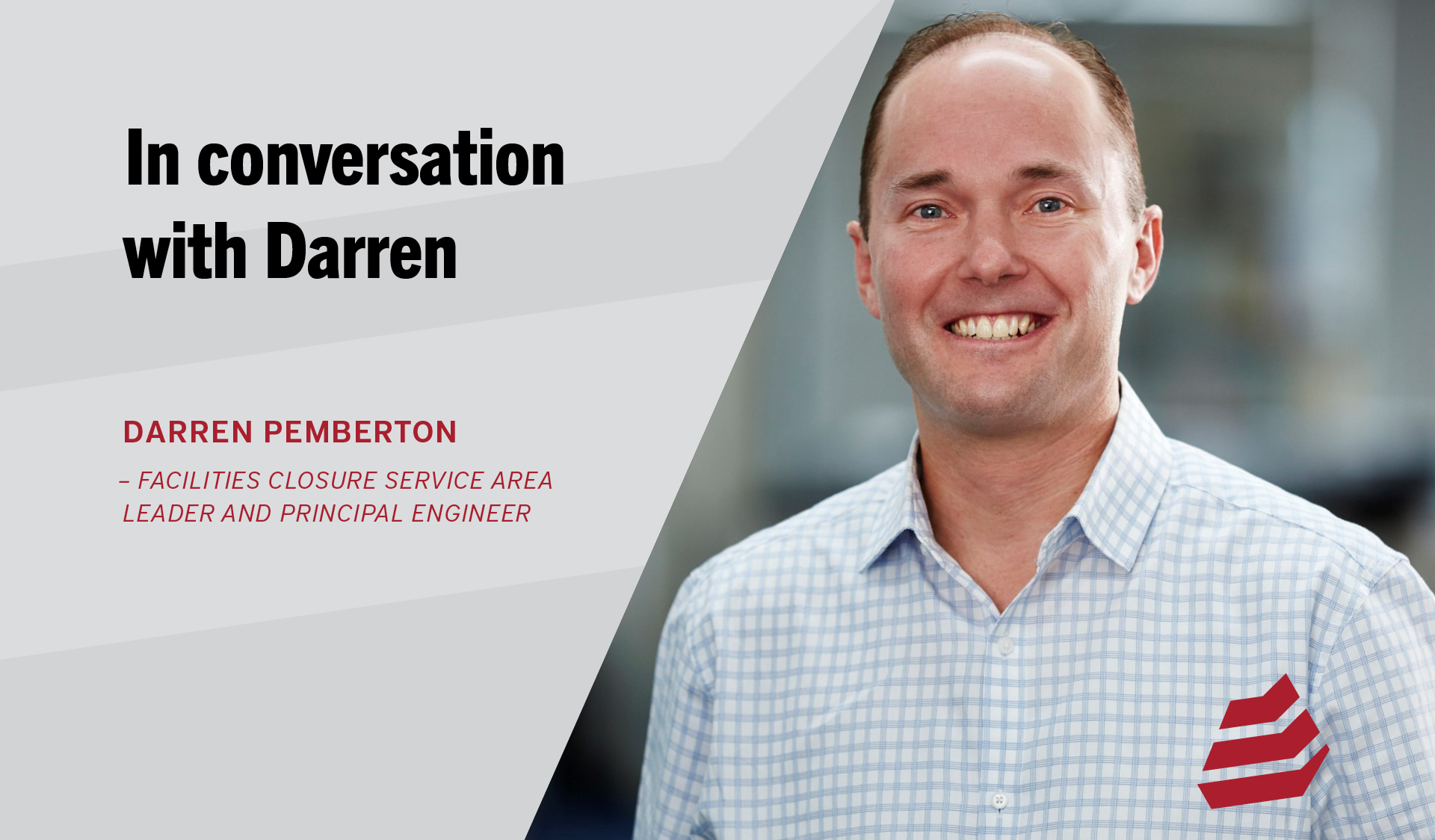Darren Pemberton is Facilities Closure Service Area Leader and Principal Engineer. We talk to Darren about his role, emerging opportunities and how ATC Williams aims to make a difference in land rehabilitation when closing facilities.
How is ATC Williams approaching the area of Facilities Closure?
Our approach to tailings, water, and waste engineering has developed competencies that put us at the forefront of facilities closure innovations as a core area of our business. All stakeholders have a social responsibility to ensure we plan for natural resources and community wellbeing. Closure plans need to be monitored throughout the project lifecycle and regularly updated to be fit for purpose when needed. Take tailings storage facilities, for example, where deposition and water management practices can be implemented throughout the operational phase of the facility that can save time and money on closure liabilities.
Ten to twenty years ago, mining companies wanted to get the resources out of the ground as quickly and safely as possible, but perhaps without due consideration for closure. Since then, the government has formed regulations that give the mining industry firm directions in this area. Resource companies realise that if they don’t take the time to plan for the future, it will cost more to carry out closure operations and take longer to do the regulated closure requirements.
Facilities closure is a developing area that hasn’t received enough attention in the past. Australia has benefited from a mining boom that has left a legacy of sites and assets with costly unplanned closure issues, with 200 Australian mines predicted to close in the next ten years. At ATC Williams, we believe that closure should be considered at the inception and commencement of a project as a best practice long-term philosophy of the original design. I am inspired that a key part of my role is leading that change.
Why is site rehabilitation important?
Facility closure designs need to be carried out in a way that caters for sustainable management of natural resources and the environment and enhances the social wellbeing of local communities.
Lives depend on sound engineering. We are disturbing land – but we can minimise that impact and return the land to equivalent or better than what it once was. We all have a social responsibility to understand the impacts of our projects, whether it be a landfill facility, a waste dump or a tailings storage facility. As engineering consultants, we need to be providing strong leadership for our clients and advocating for affected stakeholders, now and into the future.
Depending on the site, the land can be returned to natural parks or wetlands or for community use, such as sports facilities. A tailings dam will have different rehabilitation requirements than a landfill site. That’s why community consultation is essential. Forums and focus groups allow for community buy-in at an early stage, which supports the project’s success. I am proud to say that several projects I am involved with are delivering these outcomes. We are seeing a swing to this being a matter of normality.
How does facilities closure make a difference?
Facilities closure is an exciting role in an expanding and growing field with much potential for increased service offerings. It allows us to offer complete cradle-to-grave tailings facility lifecycle management. It’s great to work in a space where you can restore a site to its original state or even better than what it was, and then give it back for community use.
We already do a lot of work in the Hunter Valley, based out of our Singleton office. I would love to see our team numbers grow in that area initially, especially employing local people. Part of my role is looking for opportunities in all states, particularly New South Wales, Queensland, Northern Territory and Western Australia. There is a lot of opportunity for the Perth office to expand our footprint there. Ten years from now, I see a dedicated team of 25-30 people working in closure across our offices.
What kind of people are you recruiting?
We’re after people passionate about the mine closure space and dedicated to sustainable development. I’m seeing the younger generation has more social and environmental consciousness than my generation did 20-30 years ago. It certainly wasn’t talked about in the media and generally like it is now.
Today, people of all ages seem acutely aware of the environment and conduct themselves better. We need technical people with a strong social conscience and environmental responsibility who want to make a difference. We know that tailings, water and waste management solutions disturb the land, albeit for an important purpose. Land restoration is our opportunity to give back. It’s essential to do our best to take care of our home and treat it with respect and care.
When did you join ATC Williams?
I joined the company in 2003, straight out of University, so I’ve been with the company for nineteen years as a tailings dam engineer. It was a smaller group back then, and I was lucky to have career exposure to all kinds of projects. I understand the complete facility lifecycle, from design and operation to closure. Being involved in expanding the business to what it is today has been very rewarding.
